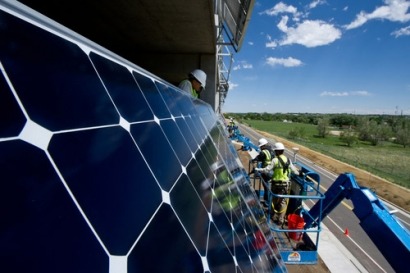
Solar is getting cheaper and as a result more affordable. The tariff changes themselves highlight this. Once bought and installed both businesses and consumers can make significant savings through Solar PV.
From Wednesday 1 August residential tariffs decreased from 21p/kWh to 16p, and typical commercial tariffs at the 50kW scale fell from 15.2p/kWh to 13.5p. Looking at this quickly you would think installing a solar roof now is probably not worth it. But this really isn’t the case, at all!
As the tariffs are dropping, so is the price of a fully installed solar PV system. In recent years we have seen PV modules reduce in price by nearly four times. Other components are also dropping in price, such as inverters and solar mounting systems, which have benefitted from manufacturing improvements and a more competitive wholesale market here in the UK. On top of all this, installers have now become very experienced and can install the systems in a more professional and efficient manner than ever before. In-fact over the last couple of years installation costs have come down by more than half, which is similar to what has happened with the feed-in tariffs.
However, personally, there is too much focus on the feed-in tariffs. This is just one of the positives of having solar on your roof, but there are many more.
For example, any electricity generated means you do not have to buy electricity from your supplier. This is the most important factor of having a solar roof. According to DECC, the price of electricity will rise by 33 percent by 2020, and commercial tariffs will rise by 43 percent. That’s a hefty increase!
From the commercial view-point, we would expect a 50kW installation to cost around £65k. However, we’d estimate the savings on electricity bills over 20 years to be well over £110,000, making PV by far the cheapest way of supplying electricity to the building. Add to this the additional feed-in tariff payment of over £200,000 for over 20 years, and suddenly it becomes very clear that solar is extremely cost effective, even despite the tariff cuts, with returns on investment of something like 18 percent, if not more.
With residential properties, the story is very much the same. A 2kW system costing £3,500 would provide savings of something like £5,000 and a feed in tariff of nearly £10,000 over 20 years, providing yet again a fantastic return on investment, coming to around the 15 percent mark.
Just looking at this here you can see just how much both businesses and consumers can save after solar PV equipment is bought and installed, even without taking the feed-in tariffs into account.
Customers must be aware though, they must be confident they are buying the best equipment, at the best price, with the best technical support available.
There are a lot of great solar panels, and solar inverters out there, but just as many bad ones. For example a lot of installers will supply inverters that won’t even last 10 years, and of course forget to mention this, which will have a big impact on any potential savings being made.
Anyone interested in installing solar, like with most things, should obtain at least three separate quotes, and ask about the technology that they are using, i.e. where it’s manufactured, it’s life expectancy etc, as this can have a big impact on the ROI.
Over the last two years we have seen the UK economy crash and burn, and although there sometimes seems a glint of light for the future, many people remain dubious whether we will recover from this financial crisis for a fair while yet.
So, for the financial savvy, the investment landscape has changed. Where stocks and shares were the 80s bliss, bricks and mortar a preferred investment in the 90s, today’s financial safe bets are few and far between. Banks have gone bust, high street heavyweights such as Woolworths, Habitat, MFI all gone, so the question is, where does the smart money go now? And how much will you realistically make?
I believe that solar PV is still one of the few viable investments around today. Providing homes with 15 percent ROI, and businesses even more, with a guaranteed revenue stream for the next two decades, even if you’re not interested in the positive environmental offering it provides, from a purely financial point it’s a no brainer!

